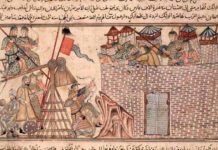Arranged marriage has been an important part of the Indian culture since time. Westerns are often amazed at the idea of getting married to a stranger.
Arranged marriage is like buying a brand new car without going for a test drive or trying a new dish without knowing what it is made of. It’s a match decided by the parents instead of the bride and the groom. In India, marriage is considered an alliance between two families not two individuals, because when a girl gets married, she marries the boy, his family, his ambitions and his responsibilities.
Arranged Marriage in Ancient India
During ancient times of Ramayana and Mahabharata, there were many ways through which marriages could be arranged, Svayamwar was one of them. When a king decided to marry off his daughter, he would send out invitations to all the princes and noblemen that he thought were well suited for his daughter. They were invited to the palace; the princess would then choose her husband by putting a garland around the man’s neck, after which the two would be married.
Matchmakers also played a very important role in arranging a marriage. They help parents find a suitable match for their children, based on the criteria provided by the parents. Religion, caste, physical looks, health and wealth were some of the criteria given to the matchmaker, who would come back with proposals from suitors. The caste system was prevalent in ancient India; therefore marriages were always fixed within the same caste.
Dowry was another custom associated with arranged marriage. Once an alliance was fixed, it was the bride’s father’s responsibility to prepare for the wedding and give gifts to the bridegroom’s family. These gifts would be anything from jewels and clothes to a certain amount of money and at times property. As time passed, the groom’s family started getting greedier and they would demand atrocious amounts of cash and sometimes even a house and car. If due to financial circumstances the bride’s father was unable to fulfill the requests put forward by the groom’s family, the wedding would either be called off or the girl could be ill-treated after marriage by the groom’s family.
In ancient India divorce was unknown. A woman was never seen without a man in her life. He would be either her father, brother, husband or son. A single woman was considered evil. That’s why after the death of her husband the woman was asked to sit on the pyre with her husband’s dead body, to be burned alive. The custom of burning women alive along with their husband’s dead bodies is known as Sati. This custom is no more in practice.
Arranged Marriage in Modern India
As time passed, the outlook towards arranged marriage also started changing. The prospective bride and bridegroom were allowed to meet, talk, and even go out on a few dates before getting married. The new media opened many doors, with abundant availability of dating and matchmaking sites.
People have started accepting love marriages with the same zeal as arranged marriages. Although arranged marriages are still prevalent in modern India, criteria like religion and caste have been replaced by how compatible the couple is.
The difference between an arranged marriage and love marriage is that the couple lack feelings for each other before getting married; instead they fall in love after they get married. The foundation of marriage is based on the excitement of starting a journey together, during which they start understanding each other, and get to know each other. Couples often go into it feeling a bit scared and confused, and with many questions in their minds. But as they start getting used to their partners, most of the time all the initial hesitation is replaced by love and respect.
Nowadays, there have been cases where couples fail to develop feelings after getting married, resulting in divorce. Divorce has become common lately more than ever before. Until the late 20th century, divorce was considered a taboo and women were not able to get out of a marriage easily. They would be asked by their family members to stay in the relationship, despite being unhappy.








